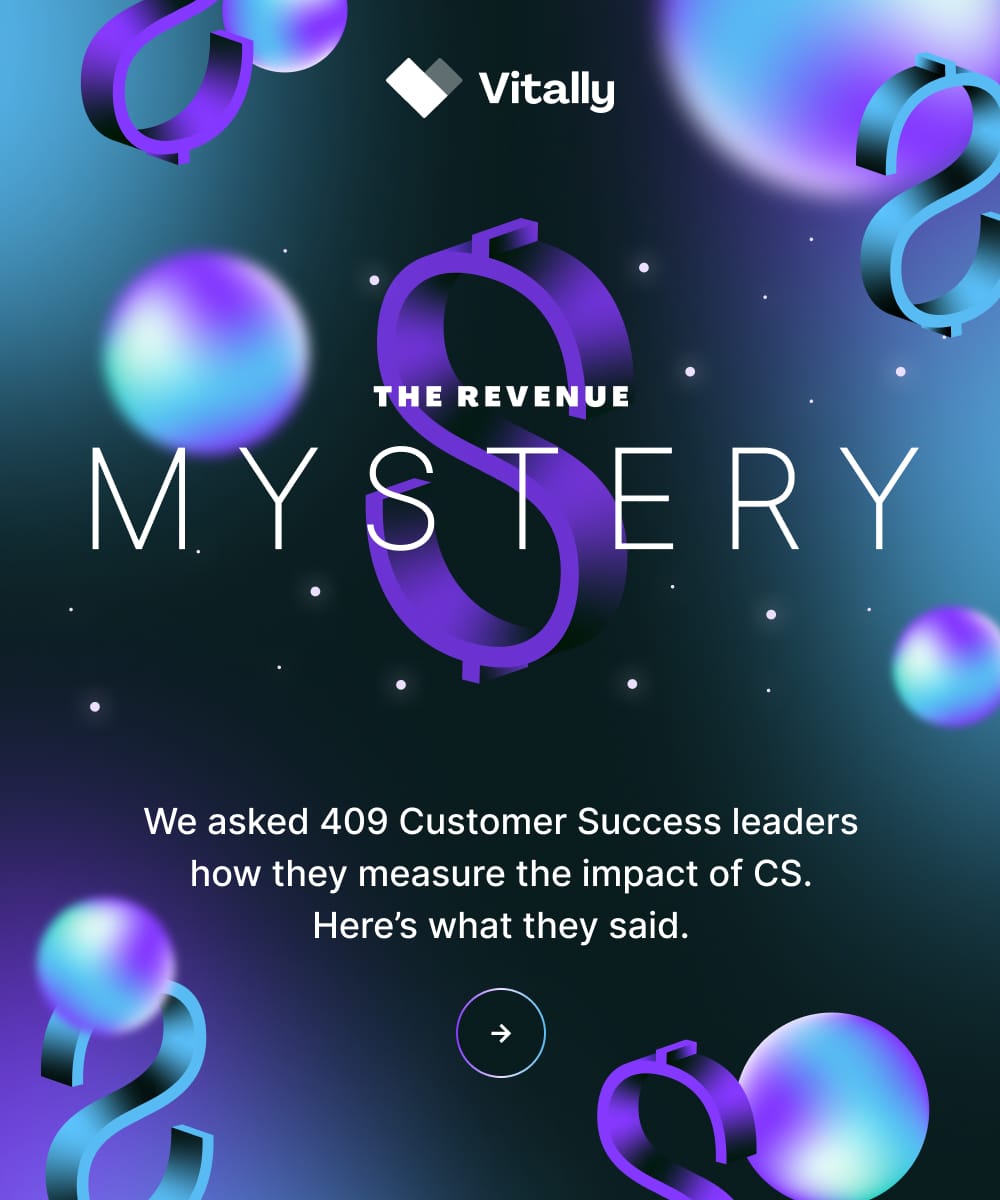
Samantha David is the Digital CS Program Manager at monday.com and a member of the Vitally Success Network.
///////
The role of a Customer Success Manager is constantly evolving. It has moved beyond ensuring customer satisfaction; now, it plays a pivotal role in driving revenue growth and renewal certainty.
With the SaaS market becoming increasingly saturated and companies looking for ways to cut costs, the CSM holds more responsibilities. Among those responsibilities, upsells and account expansions have always been critical. Now, it’s more important than ever to quickly identify these opportunities and understand the priority of the expansion, both for you and your customer.
As a leader within the Scale Customer Success space, I’m compelled to share my perspective through a scaled touch lens. For those unfamiliar with Scale or Low-Touch Customer Success, I like to simplify it with one phrase: “more impact, less work.”
Scale, digital, low-touch — no matter what you call it, the goal is a systematic approach that allows Customer Success teams to manage and improve customer relationships efficiently as they grow. This is done through automation, data-driven insights, and streamlined resource accessibility. As a result, teams can support a larger customer base without sacrificing the quality of support.
Related: What's Scaled Customer Success and Why Does It Matter?
Now, let’s focus on expansion opportunities. This is a common thread across all CS segments and go-to-market (GTM) teams. While retaining business is crucial, expanding it is even better.
Before diving into how to identify these opportunities, let’s first define what “expansion opportunities” entail. They can include upsells, cross-sells, contract renewals, new use cases, or additional in-house product purchases. One of the primary objectives for CSMs is to retain customers, but equally important is driving additional value for the customer, which often results in mutual business growth.
Strategy 1: Customer Segmentation
One of the most effective strategies for identifying expansion opportunities is customer segmentation. By dividing your customer base into specific segments based on various criteria — such as customer journey stage, industry, company size, product usage, or use case — you can tailor your approach to meet each segment's unique needs.
For instance, segmenting customers by “usage pattern” allows you to analyze how different customer groups are using your product. If you identify a segment with high usage, it may indicate that they are ready for an upsell conversation. If a segment is underutilizing the product, there’s an opportunity to dive deeper, offer training, or explore new use cases.
Another segmentation method is based on the customer journey. Understanding where a customer is in their journey helps establish their goals and success metrics. When a customer is approaching a renewal or has developed a strong relationship with the product, this is the perfect time to explore expansion possibilities.
Industry and use case segmentation can also highlight trends specific to a customer’s domain. By offering insights from customer case studies within similar industries, you can demonstrate how others are gaining additional value, making a compelling case for expansion.
Strategy 2: Data-Driven Insights
Data is one of the most valuable tools available to a CSM. It enables us to track account activity and identify expansion opportunities without needing direct contact with the customer. Some of the key metrics to monitor include Net Promoter Score, Customer Health Score, and Churn Risk Indicators. Let me explain:
- Net Promoter Score (NPS): A high NPS score often indicates customer satisfaction and suggests openness to expansion discussions.
- Customer Health Score: This metric, which combines account actions, seat capacity, engagement levels, and product usage, can reveal when a customer is ripe for an upsell.
- Churn Risk Indicators: By identifying customers at risk of churn, you can refocus efforts to not only retain them but also find opportunities for additional value, turning a potential churn into a win.
Related: How to Use Data to Make Better Decisions in Customer Success
Strategy 3: Crafting Tailored Approaches Based on Prioritization
Scaled Customer Success often relies on automated interactions, but that doesn't mean personalized communication is completely off the table. Based on the criteria established through customer segmentation and data analysis, you can prioritize expansion opportunities by evaluating factors such as Impact vs. Effort, customer potential ROI, and Customer Lifetime Value.
Just remember that not all opportunities are created equal. Prioritizing those with the greatest potential for impact will allow you to focus on areas that benefit both the customer and your business. Once prioritized, the next step is to engage the customer with personalized communication.
Use the insights you’ve gathered to showcase the value of the expansion, demonstrate your expertise, and facilitate a meaningful conversation with key stakeholders. This is exactly what you need to kick off those conversations with your customers that will lead to closing your increased revenue goals.
Let’s Recap
Identifying and prioritizing expansion opportunities in Customer Success at scale requires a combination of data analysis, customer segmentation, and a deep understanding of your product’s value proposition. By streamlining these processes, you can spend less time searching for opportunities and more time engaging with customers in productive, value-driven conversations.
Implement the strategies above to drive both revenue growth and customer success, proving that scalability and personalization can, indeed, go hand-in-hand.










